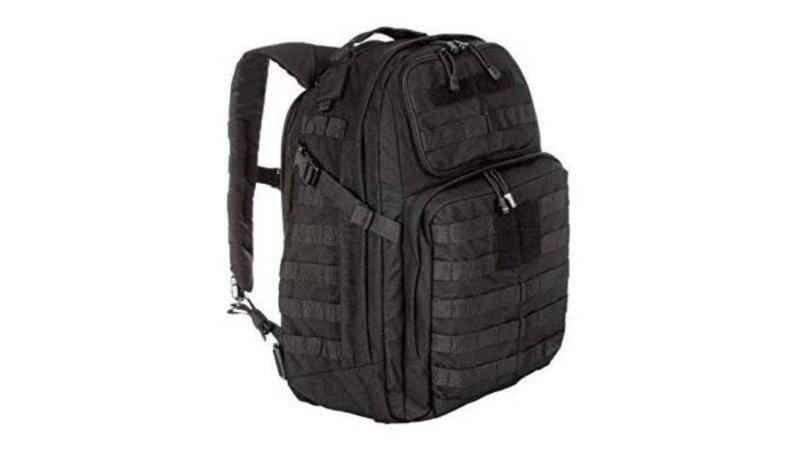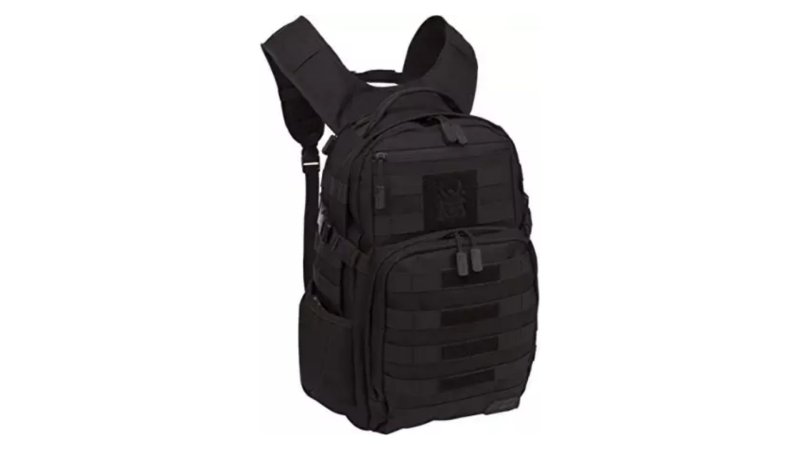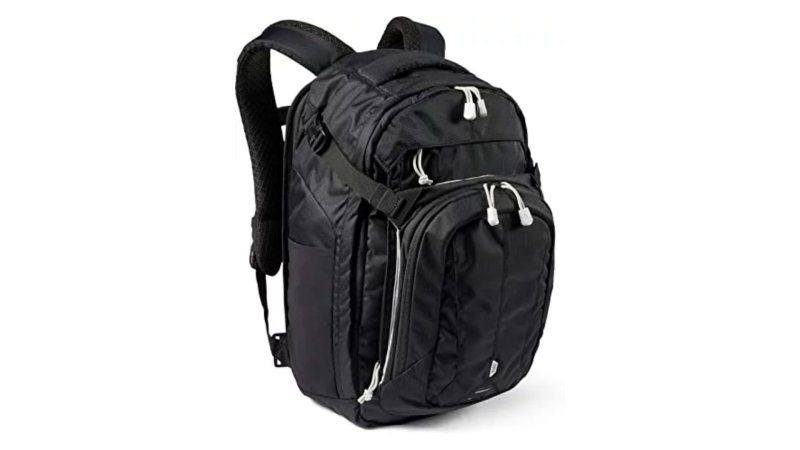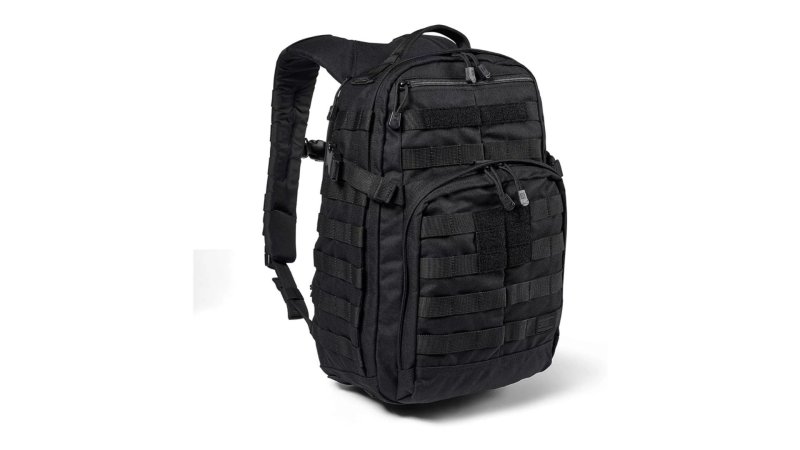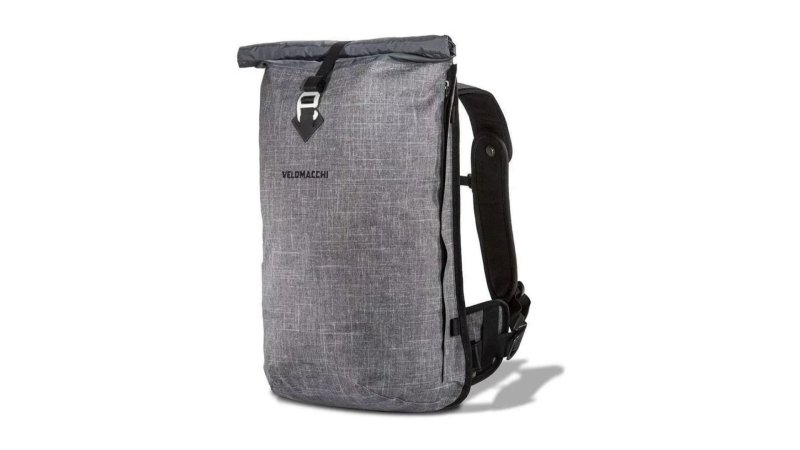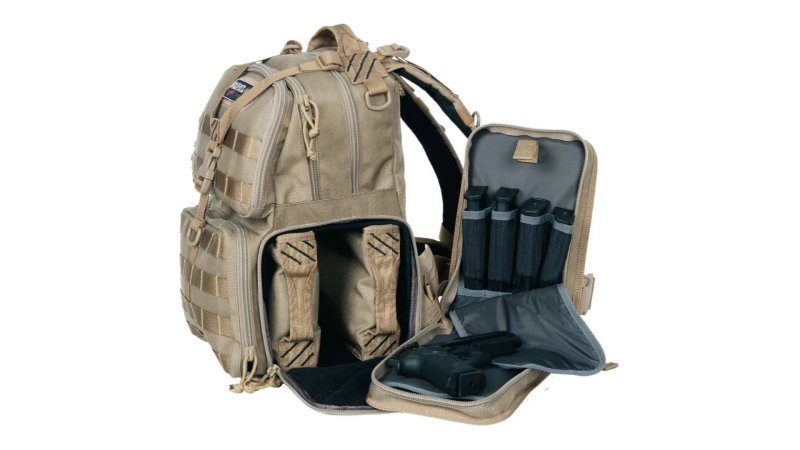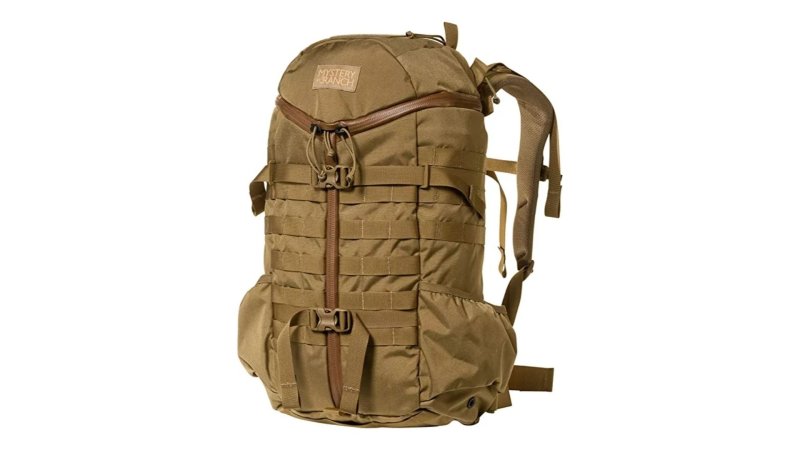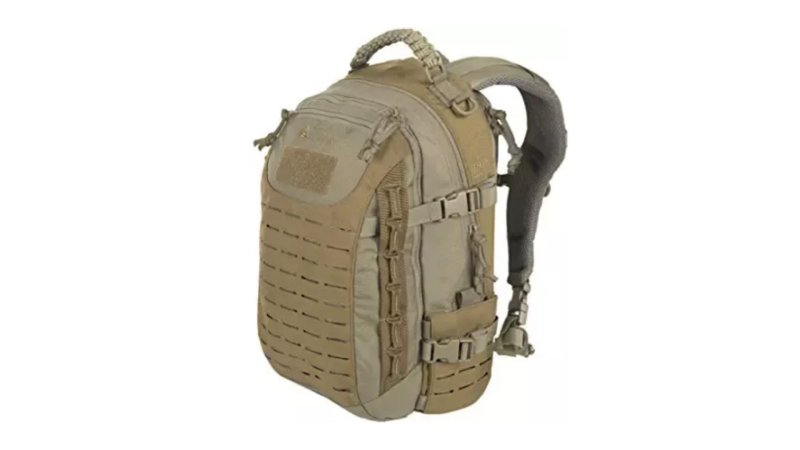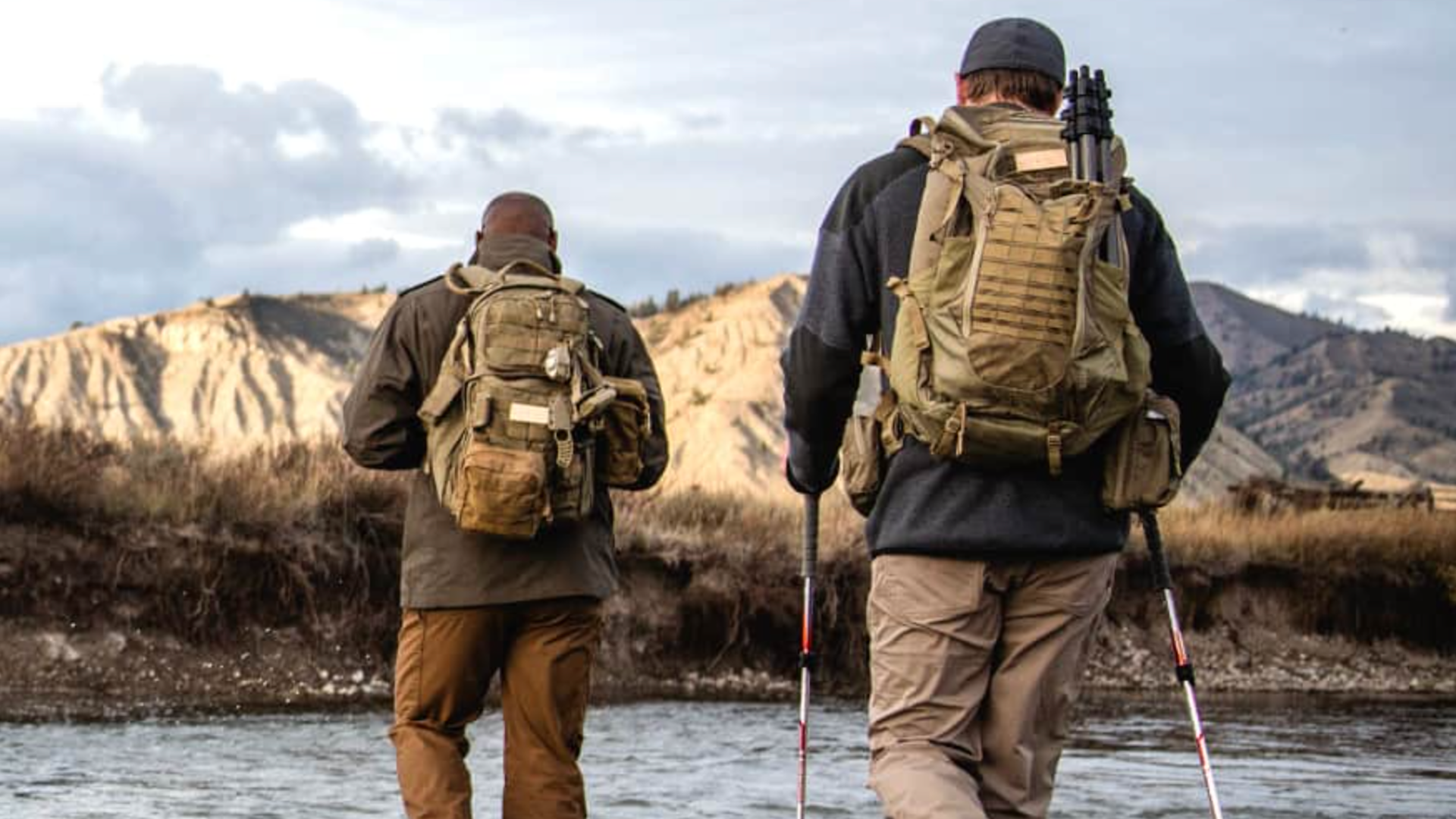

We may earn revenue from the products available on this page and participate in affiliate programs.
The tactical backpack community is interesting. We get the folks who use them for military, law enforcement, or first responder purposes, where they’re appropriate tools for the job. But we’re also curious about the people who get them for show — especially in the concealed carry crowd — because the morphology of many tactical backpacks is so obviously military and the whole point of carrying a weapon in public is to do so without anyone knowing you are doing so. Of the gear reviewers here at Task & Purpose who carry concealed, we sure as hell don’t do it wearing 5.11 cargo pants and a concealed carry vest while wearing an obviously tactical backpack. That’s just bad planning.
Yet tactical backpacks have their place — typically on the backs of soldiers and infantry Marines, in the squad car trunks of S.W.A.T. members, and in the basements of apocalyptic preppers. To that end, our trusty team of gear reviewers took a look at the range of tactical backpacks on the market to help you decide which are the best for your needs. What did we learn through our hands-on testing? Read on to find out.
- Best Overall: 5.11 Tactical RUSH 24 2.0
- Best Value: Samurai Tactical Wakizashi
- Editor’s Choice: 5.11 Tactical COVRT18 2.0
- Best Compact: 5.11 Tactical RUSH 12 2.0
- Best Urban: Velomacchi 35L Giro
- Best Range Bag: GPS Tactical Range Backpack
- Most Mysterious: Mystery Ranch 2 Day Assault Pack
- Honorable Mention: Direct Action Dragon Egg MK II Backpack
Best Overall
5.11 Tactical RUSH 24 2.0
Pros
- Superb internal organization
- Comfortable shoulder straps
- Padded back
- Hidden CCW compartment
Cons
- Poorly designed chest strap
- Heavy empty weight at 3.84 lbs
Specs
- Capacity 37 L / 2275 cubic inches
- Weight 3.84 lbs
- Concealed carry capable Hidden CCW compartment with loop panel
Best Value
Samurai Tactical Wakizashi
Pros
- Good functionality
- Adjustable sternum strap
- MOLLE compatible webbing
- Quick release shoulder straps
Cons
- Lacks true clamshell design
- No laptop sleeve
- No hip belt
Specs
- Capacity 24 L / 1464 cubic inches
- Weight 2.2 lbs
- Concealed carry capable No
Editor’s Choice
5.11 Tactical COVRT18 2.0
Pros
- Low-key appearance
- Outstanding organization and functionality
- TSA-friendly rear laptop compartment
- Dual side water bottle pockets
- Durable and lightweight
Cons
- Lacks yoked shoulder straps
Specs
- Capacity 32 L / 1953 cubic inches
- Weight 2.64 lbs
- Concealed carry capable Dual-access CCW compartment with internal loop panel
Best Compact
5.11 Tactical RUSH 12 2.0
Pros
- Outstanding interior organization
- Well built of 1050 denier nylon
- Hydration reservoir pouch
- Side compression straps
- Padded laptop compartment
Cons
- Weight, heavy for size
- No hip belt
Specs
- Capacity 24 L / 1464 cubic inches
- Weight 3.15 lbs
- Concealed carry capable Yes
Best Urban Pack
Velomacchi 35L Giro
Pros
- Low-key appearance, visually appealing
- Waterproof and abrasion resistant
- Quick access side pocket Magnetic roll top closure
Cons
- Lacks clamshell design
- Main compartment could be bigger
- Lacks MOLLE webbing
Specs
- Capacity 35 L / 2135 cubic inches
- Weight 3.44 lbs
- Concealed carry capable No
Best Range Bag
GPS Tactical Range Backpack
Pros
- Excellent organizational capability
- Heavy-duty teflon coated construction
- Water resistant
- Internal honey comb frame
Cons
- Pistol cases tight for larger frame revolvers
- Pistol cases lack labels for identification
- Unnecessary hip belt
Specs
- Capacity 3 pistols
- Weight 6.15 lbs
- Concealed carry capable Not applicable
Most Mysterious
Mystery Ranch 2 Day Assault Pack
Pros
- Two zippered lid pockets
- Easy access 3-zip design
- Interior dump pockets
- Adjustable yoke
- Laptop and tablet sleeve pockets
Cons
- Material not IR absorbing
- Too small for true assault pack
- Lacks velcro strap keepers
- Not made in USA
Specs
- Capacity 27 L / 1647 cubic inches
- Weight 3 lbs
- Concealed carry capable No
Honorable Mention
Direct Action Dragon Egg MK II Backpack
Pros
- Durable 500D Cordura construction and YKK zippers
- Ventilated back panel
- Laptop compatible
- Internal mesh hydration reservoir pocket
Cons
- Seems a bit heavy for a 25L pack
Specs
- Capacity 25 L / 1525 cubic inches
- Weight 3.5 lbs
- Concealed carry capable No
Why you should trust us
The active-duty and veteran gear reviewers here at Task & Purpose test the products we review at home and in the field. We have years of experience living and working outdoors with the tools we recommend. We don’t get paid by the manufacturers and have editorial independence. Our editor leaves it to us to recommend and prints what we write. All of this enables us to provide you, our valued readers, our unvarnished, honest opinions on the recommendations we make.
Types of tactical backpacks
There really isn’t a lot of variation in tactical backpacks, as most of them share a common family of features like large internal main compartments, hydration pockets, MOLLE-compatible webbing, Velcro for your patches, laptop pockets, and hidden CCW compartments The main differentiations are in size, capacity, quality of materials, ergonomics, and durability. We also especially like ones that come with hip belts.
Key features of tactical backpacks
Storage: The most important decision you’ll make when selecting a tactical backpack is capacity. Generally, these range from 20 to 55 liters. How big of a bag do you need? And remember, the larger the bag, the more crap you’ll put into it, and the heavier it will be — especially without a hip belt.
Straps: The best bags have cushy padded shoulder straps that prevent fatigue and pinched trapezius muscles. Hopefully, yours comes with a hip belt or has an attachment point for you to add one later to shift the load from your shoulders to your hips where it belongs.
MOLLE compatibility: If you work in the military or law enforcement field, the MOLLE attachment points come in handy for carrying additional gear. For carry in the civilian community, we prefer bags without MOLLE that lowers the profile.
Zippers: Look for high-quality zippers like YKK when you’re selecting a pack. Your bag won’t keep everything in if the zippers blow, and that really sucks when you’re in the field.
Material: Almost every tactical backpack is made of high denier nylon or polyester. In my opinion, many are overbuilt, so it’s worth checking the capacity vs. weight ratio. You’ll want to select a balance between ruggedness and weight.
Benefits of tactical backpacks
Organization
Most tactical backpacks are designed with pockets and compartments to enable you to organize your gear so you know where it is – that is if you put your gear in the same place every time (which we recommend). Doing so will help you find exactly what you are looking for quickly, especially in the dark. Most have a clamshell design that enables fast access and plenty of zippered and see-through mesh pockets for stowing and locating your stuff.
Durability
Let’s face it, military life is hard on gear, so it’s important that your tactical backpack is built to protect the equipment it carries and lasts for a long time. It sucks when your gear blows apart in the field and in some situations equipment failure can be life-threatening, so it is worth investing in durable gear. Tactical backpacks tend to be heavier than similarly sized backpacking or climbing packs. This is because they are usually made from reinforced polyester or abrasion and tear-resistant Cordura(™) nylon material. They’re made to withstand a higher degree of abuse and have additional padding to protect the gear stowed within the bag.
MOLLE compatibility
MOLLE is a military acronym for Modular Lightweight Load-Carrying Equipment – a system for attaching gear like magazine pouches, holsters, and first aid kits to other gear like plate carriers and backpacks. Being modular, it allows the user to customize the placement of individual equipment. It allows military members to attach additional carrying capacity to their packs and keep the things they need immediate access to handy on the exterior of their packs.
Pricing considerations for tactical backpacks
Value
Tactical backpacks are generally pretty affordable. You can find relatively inexpensive selections like the Samurai Tactical Wakizashi or SOG Ninja Tactical Daypack for less than $50 with the basic, most important features. At this price point, you might find a lot of familiar design features, but most manufacturers sacrifice the quality of materials and quality of construction to deliver at a low price point. Really check out the construction of these low-cost bags as there’s a lot of garbage on the market as well.
Mid-range
You can expect to pay between $80 and $150 or a mid-range tactical backpack in the 25 to 50 L capacity range. Within this price range exists myriad options, and we recommend making a list of your needs and desires before searching to help dial in your selection.
Premium
We consider any tactical backpack above $200 to be a premium pick. These packs typically feature more capacity, bells and whistles, and modularity than lower-priced packs. Many times, with premium packs, you are also paying for advanced materials that lower overall pack weight. Like most premium products, we’re not convinced the extra cost always delivers extra performance.
How we chose our top picks
All of the backpacks recommended in this review were hands-on field-tested by your trusty crew of Task & Purpose gear reviewers. We take our time to get to know the strengths and weaknesses of each backpack, and also check out the reviews of other experts just to make sure we’re not missing anything. Where we see something interesting that we haven’t field-tested, we identify these products as honorable mentions that are worth a look.
FAQs on tactical backpacks
You’ve got questions, Task & Purpose has answers.
Q. What should go in a tactical backpack?
A: This really depends on the mission. Common items are extra ammunition, water, a first aid kit, food, personal hygiene items, a hardshell jacket, a warming layer, a headlamp, communication devices, maps, pens, GPS, and other mission-specific tools. Depending on the length of the mission, you might also consider a lightweight blanket, extra clothing, and shelter.
Q. What are the loops for on tactical backpacks?
A: The loops serve two purposes: 1) to attach other small pouches to expand the carrying capacity of the pack, and 2) to provide a place to attach immediately accessible items.
Q. What are the benefits of a tactical backpack?
A: Tactical backpacks typically have greater durability, modularity, and organizational options than civilian backpacks.
Q. How heavy is a tactical backpack?
A: It depends. The larger the capacity of the pack and the more durable the material in terms of denier, the heavier it typically is.
Q. What is the difference between a regular backpack and a tactical backpack?
A: Civilian backpacks tend to be considerably lighter but less durable.
Q. How do you use a tactical backpack?
A: Like all backpacks, you put it on your back and walk around. So easy a Marine can do it!
